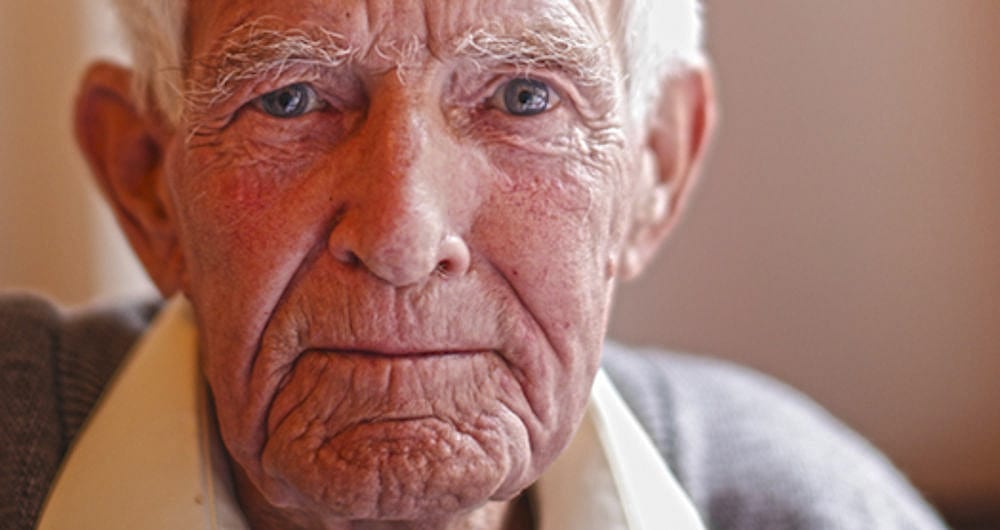
There’s a common misconception that pain is an inherent part of ageing, that as you get older and may develop health issues, pain is just something you’re going to have to deal with.
But that’s not true, pain is often a symptom that can be managed with the correct interventions and treatments.
Older people are less likely to report pain themselves, especially if they have cognitive impairment, but that doesn’t mean they are not experiencing it.
Pain can be hard to hide, it can be seen in some way or another. Pain in the elderly may be expressed in ways that people caring for them misunderstand.
Agitation and aggression may be seen in older people, and more often than not it’s dismissed as part of their disease progression – whether it be dementia or another condition.
Because of the discomfort and challenges in communication, challenging behaviours may be how the older person is trying to indicate that something is wrong.
When assessing an older person’s health, it’s crucial to do a pain assessment first. Health professionals, carers and loved ones need to exclude any underlying causes for the behaviour.
But how is pain checked?
For people who cannot verbalise their pain, the most common way to check if a person was in pain was by using the Abbey Scale.
The Abbey Scale uses observation across six categories; vocalisation, facial expression, changes in body language, behavioural changes, physiological changes and physical changes to calculate a score determining how much pain a person is in.
One of the challenges with the Abbey pain scale is that is does not differentiate between distress and pain.
And that the subjective scoring of the changes seen is entirely up to the person observing the elderly person – meaning that there is human bias.
Now, with the evolution of technology, there are other ways to detect pain – such as PainChek™.
PainChek™ is the world’s first smartphone pain assessment and monitoring device. It automatically recognises facial muscle movements that indicates pain and takes note of them.
Philip Daffas, CEO of PainChek™, says they saw that pain was a common problem with people who may be living with dementia within the aged care or home care setting.
“These people can end up suffering with pain in silence.”
“The facial recognition and facial pain assessment technology built within the PainChek™ App is unique and world leading technology.”
It takes the human bias out of detecting pain by automatically detecting pain through facial recognition technology.
PainChek™ is also able to record the observations of pain related behaviours such as how the person is moving and vocalising pain, as well as calculating an overall pain score and allowing the caregiver to monitor the effect of medication and treatment over time.
“Most importantly, it allows all carers, from residential nurses in the aged care setting through to a family member in the home, to perform accurate pain assessments at any time and in any place. This ensures residents or family members can always receive the right level of care.”
Matt Kowald is the facility manager at Barossa Village, and has been using the PainChek™ App with some of the resident’s at the facility.
Kowald says that one of the main challenges they face, as would many other facilities, is getting the resident to describe their pain.
And that they would try to “put a number to it”, by asking them to describe their pain on a scale of one to ten.
Dementia poses a big challenge for aged care staff when it comes to managing pain, “when we look at pain we have to look at a case by case study” and “being with them in that moment” says Kowald.
By adding the PainChek™ App to “their toolkit of pain management”, Barossa VIllage were able to adopt a “formalised way of looking at assessing people’s pain” which Kowald describes as “revolutionary”.
“When we got Dementia Support Australia in to help provide support with one of our residents,” explained Kowald.
“We thought we looked at all the different aspects, and we were getting on top of the behaviours she [the resident] was exhibiting.”
“They, as part of their toolkit, brought out the PainChek™ App and showed us that she had pain and asked question in a different way that we hadn’t asked before.”
“And that indicated that she had a seven out of ten in terms of pain, which was mild pain, which we weren’t addressing.”
“We put in interventions and that helped reduce some of those behaviours.”
“I think the best thing about this technology is the application, in a setting to improve the profile of the work that you are doing”.
“It was a light bulb moment, we thought ‘if we have to get experts to come in and do this, and we’re doing pain assessment all the time – we have to do it in the best what we can’.”
If your loved one has dementia, they can contact Dementia Support Australia who provide a national service and use PainChek™ as their pain assessment tool.
You can also contact PainChek™ directly and they can help you access the PainChek™ App – either directly or through a healthcare professional.
What do you have to say? Comment, share and like below.